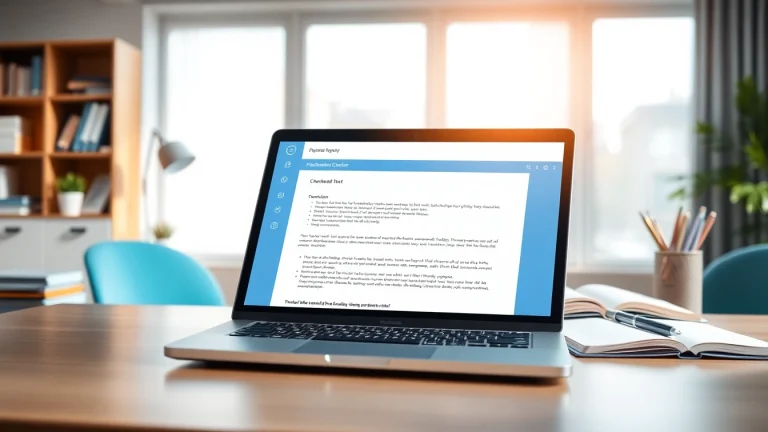
Enhancing Success with 11 Plus Tutor Strategies for Students
Understanding the 11 Plus Exam
What is the 11 Plus Exam?
The 11 Plus exam, often referred to as the Eleven Plus, is a selective examination administered in the United Kingdom for students seeking admission to grammar schools and some independent schools. Typically taken by children in their last year of primary education, this examination plays a critical role in determining educational pathways. The exam is designed to assess a child’s aptitude in various subjects, primarily composed of English, mathematics, verbal reasoning, and non-verbal reasoning.
Importance of 11 Plus in the UK Education System
The 11 Plus exam signifies one of the first major academic hurdles in a child’s educational journey. Success in this exam can grant access to prestigious grammar schools, which are known for their rigorous academic standards. As such, the results of the 11 Plus not only influence a child’s immediate educational placement but can also significantly impact their overall academic trajectory. It encourages a competitive spirit and motivates students to strive for excellence, providing opportunities for skill development that can last a lifetime.
Key Subjects Covered in the 11 Plus Exam
To prepare for the 11 Plus exam, students must be well-versed in several key subjects:
- English: This section assesses comprehension, vocabulary, grammar, and writing skills through various questions, including comprehension passages and literal/figurative language use.
- Mathematics: Questions typically cover basic arithmetic, problem-solving, and more advanced topics like fractions and percentages, which test students’ numerical abilities and logical thinking.
- Verbal Reasoning: This part of the exam evaluates critical thinking and ability to understand and manipulate language through tasks such as analogies, synonyms, and patterns.
- Non-Verbal Reasoning: This assesses spatial awareness and logic through visual problem-solving. Students may encounter questions involving shapes, patterns, and sequences.
Choosing the Right 11 Plus Tutor
Qualities to Look for in an 11 Plus Tutor
When seeking an 11 plus tutor, several critical qualities should guide your choice:
- Subject Expertise: Ensure the tutor has a strong background in the subjects assessed, with a particular focus on the 11 Plus exam format.
- Teaching Experience: Tutors with experience in teaching or tutoring children preparing for the Eleven Plus exam will be more adept at providing relevant resources and guidance.
- Communication Skills: An effective tutor should convey concepts clearly, ensuring students understand the underlying principles, not just the answers.
- Approachability: A friendly, supportive demeanor encourages open communication, helping students feel comfortable asking questions and expressing difficulties.
Online vs. In-Person Tutoring: Pros and Cons
Deciding between online and in-person tutoring depends on various factors, including student preferences, availability, and learning styles. Here’s a breakdown of the pros and cons:
- Online Tutoring:
- Pros: Flexibility in scheduling, the ability to work with tutors from various locations, and access to diverse online resources.
- Cons: Potential technological issues, the need for self-motivation, and sometimes less personal interaction.
- In-Person Tutoring:
- Pros: Direct interaction, easier to gauge body language and engagement levels, and can sometimes create a more focused learning environment.
- Cons: Often more rigid scheduling, can limit options if many tutors are not available in your area.
Personalizing Tutoring Approaches for Different Learners
Every child learns differently, and a personalized approach to tutoring is essential for maximizing effectiveness. Here are some strategies:
- Learning Styles: Identify whether your child is a visual, auditory, or kinesthetic learner. Various strategies and resources can be tailored to these styles—for example, using visual aids for visual learners or incorporating more discussions and verbal exercises for auditory learners.
- Assessing Initial Capability: Initial assessments to gauge strengths and weaknesses can inform the tutoring focus. Mock exams can provide comprehensive insights into areas needing attention.
- Setting Personal Goals: Collaborate with the tutor to set realistic, achievable goals that are tailored to your child’s abilities, motivating them and providing clear benchmarks of progress.
Effective Study Techniques for 11 Plus Preparation
Time Management Strategies
Effective time management is crucial for successful 11 Plus exam preparation. Here’s how to create a structured study plan:
- Creating a Study Schedule: Develop a consistent timetable that allocates specific periods for each subject. This helps in developing a routine and ensures all areas are covered adequately.
- Breakdown Study Sessions: Use techniques like the Pomodoro Technique, where study sessions are divided into 25-minute focused intervals followed by a 5-minute break, to maintain concentration.
- Balance Academic and Relaxation Time: Incorporating periods for leisure and relaxation can help prevent burnout and maintain a healthy study-life balance.
Utilizing Practice Papers and Mock Exams
Engaging with practice papers and mock exams is one of the most effective ways to prepare for the 11 Plus. Here’s how:
- Regular Mock Exams: Incorporate timed mock exams into the study schedule to simulate test conditions, teaching children how to manage panic and time effectively.
- Review and Analyze Results: After mock exams, thoroughly review incorrect answers. This helps identify patterns in mistakes and areas that require further focus.
- Accessibility of Resources: Utilize various resources available online, including past papers, sample questions, and interactive quizzes, to diversify preparation methods.
Incorporating Interactive Learning Tools
Today’s technology offers numerous interactive tools that make learning more engaging:
- Educational Apps: Leverage apps that focus on 11 Plus preparation, combining learning with gamification to keep children motivated.
- Online Tutoring Platforms: Many online platforms offer interactive tutoring sessions with digital resources and real-time feedback that enhance understanding and retention.
- Videos and Tutorials: Utilize instructional videos covering specific topics, providing visual context that complements written materials.
Tracking Progress with an 11 Plus Tutor
Setting Achievable Goals
Goal setting is a crucial part of student progression. Here’s how to set and track these goals effectively:
- SMART Goals: Make goals Specific, Measurable, Achievable, Relevant, and Time-bound. For example, instead of just aiming to improve in English, a goal could be, “Improve comprehension skills by completing two passages per week with over 70% accuracy.”
- Regular Check-Ins: Establish frequent progress review sessions with the tutor to discuss achievements and areas that require further focus.
- Encouraging Reflection: Have your child reflect on their learning journey periodically, encouraging them to acknowledge improvement and formulate plans for overcoming challenges.
Assessment Methods Used by Tutors
Various assessment techniques are employed by tutors to gauge student understanding and progress:
- Formative Assessments: Regular quizzes, in-class work, or assignments allow tutors to assess ongoing understanding and adjust instruction accordingly.
- Summative Assessments: Larger tests at the end of a study period to evaluate cumulative knowledge and skills, often in a format similar to the 11 Plus exam.
- Feedback Mechanisms: Ensure that constructive feedback accompanies assessments, highlighting strengths and providing strategies for improvement.
Adjusting Strategies Based on Performance
Adjusting tutoring strategies based on performance is vital in optimizing student readiness:
- Identifying Weaknesses: If repeated patterns of incorrect answers emerge in specific areas, abnormal emphasis should be placed on those during future sessions.
- Flexible Lesson Plans: Create flexible lesson plans that can evolve as the child progresses, ensuring that no area is neglected.
- Incorporating Different Resources: Use different methods and materials to tackle the same topic to find the most effective approach for the child’s learning style.
Supporting Your Child Beyond Tutoring
Creating a Positive Learning Environment at Home
Establishing a conducive home study space is fundamental for effective learning:
- Minimize Distractions: Designate a quiet area for study, free from distractions such as television, mobile devices, and other noise.
- Include Learning Tools: Provide access to necessary learning resources such as books, stationery, and technology, ensuring everything is readily available to your child.
- Encouragement and Support: Offer support through encouragement and recognition of achievements, motivating your child to push through challenges.
Encouraging a Growth Mindset
A growth mindset can greatly influence motivation and resilience in learning. Here’s how to foster this mindset:
- Model Learning: Share your own challenges and successes with learning, highlighting the importance of perseverance and continual improvement.
- Emphasize Effort Over Results: Encourage your child to focus on effort and learning rather than just grades. Celebrate persistence and hard work as much as success.
- Teach Resilience: Help your child understand that failure is part of learning. Encourage them to view challenges as opportunities for growth rather than obstacles.
Engaging with Schools for Additional Support
Collaboration with schools can provide added academic support for your child:
- Open Communication: Establish communication with teachers regarding your child’s progress in school, and any areas in which they may need additional help.
- Exploring School Resources: Inquire about any additional resources the school offers, such as after-school clubs, homework help, and test preparation workshops.
- Advocating for Your Child: If you notice specific challenges, don’t hesitate to advocate for alternative resources or tailored support to meet your child’s needs.


